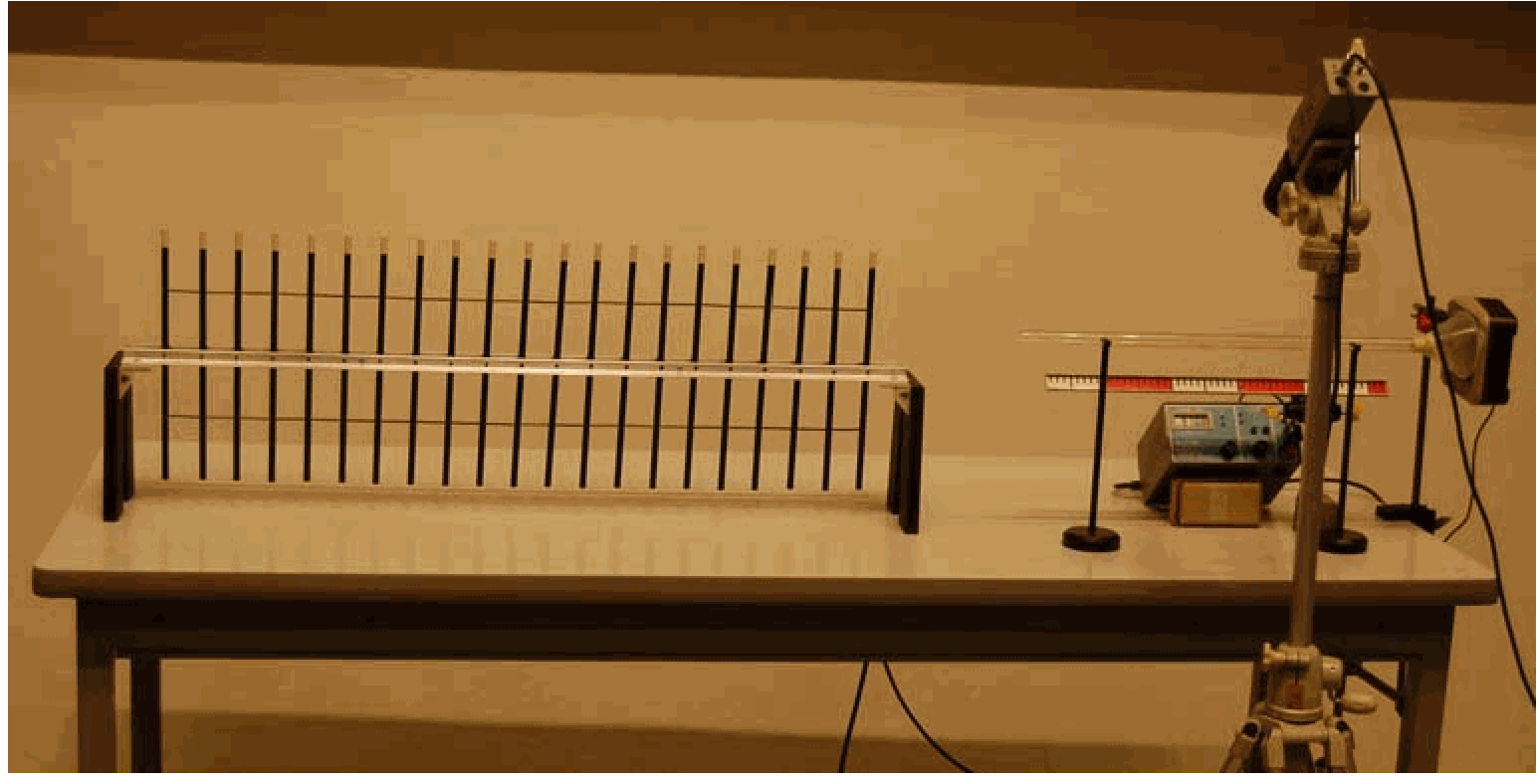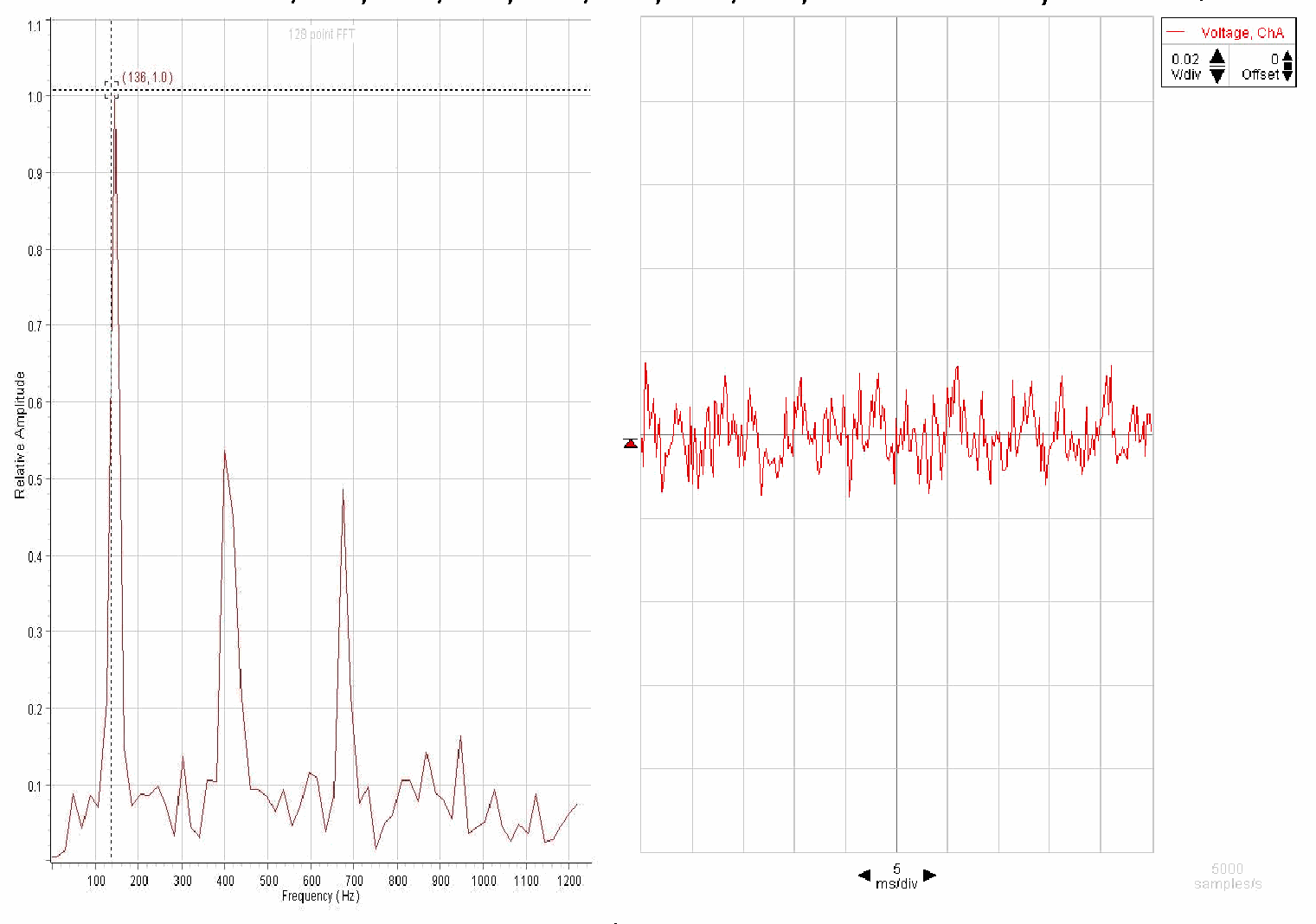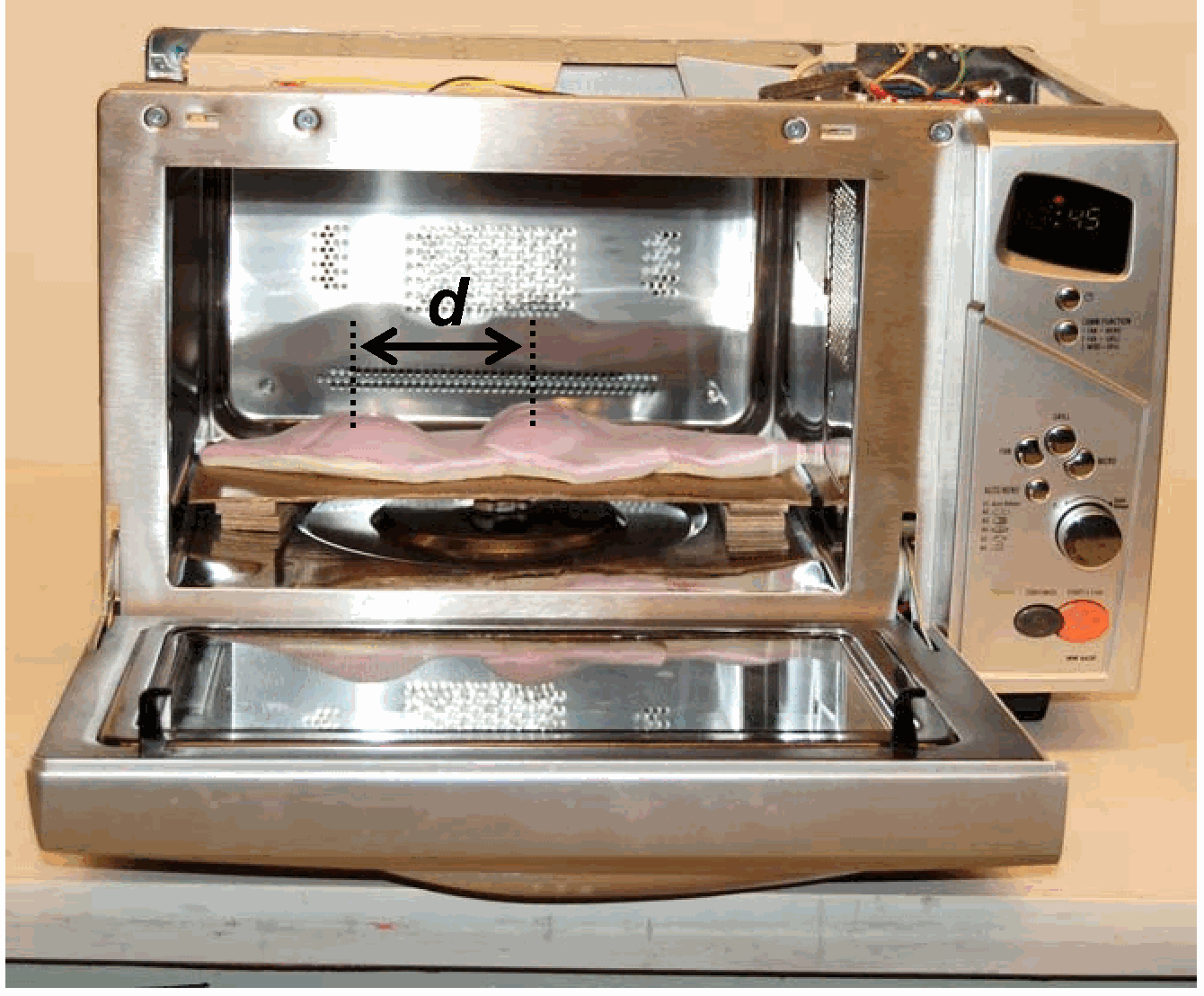06 Microwave Oven Standing Waves#
Aim#
To show a standing electromagnetic wave.
Subjects#
3B22 (Standing Waves)
5N10 (Transmission Lines and Antennas)
Diagram#

Fig. 359 .#
Equipment#
Microwave oven. The oven is adapted so it can operate with its door open.
Piece of cardboard covered with marsh-mallows.
Video-camera and projector to project an image of the marsh-mallows to the students.
Safety#
We operate the microwave oven with its door open, so keep enough distance away from it. One hazard is well known and documented: As the lens of the eye has no cooling blood flow, it is particularly prone to overheating when exposed to microwave radiation. This heating can in turn lead to a higher incidence of cataracts in later life.
There is also a considerable electrical hazard around the magnetron tube, as it requires a high voltage power supply.
Presentation#
Shortly the operation of the microwave oven is explained to the students. This is done by showing the cavity magnetron to them and explaining its operation (see Figure 360). See for instance: https://www.radartutorial.eu/08.transmitters/tx08.en.html

Fig. 360 .#
The oven is switched ON for around 2 minutes. After around 30 seconds it is observed that the marsh-mallows rise. After two minutes it is clearly observed that the rising occurs only at certain spots (see Figure 361).

Fig. 361 .#
We measure \(d =10 \mathrm{~cm}\).
Explanation#
The rising of the marshmallows at certain spots only, shows that there is heating only at certain spots. This can be explained by assuming a standing em-wave in the cavity that the oven is.
Discussion:#
Knowing that the magnetron-frequency is \(2.45 \mathrm{Ghz}\), makes that the wavelength in air of the em-wave equals \(12.2 \mathrm{~cm}\). Then possible standing waves are standing waves with \(n(12.2) \mathrm{cm}[n=1,2,3, \ldots]\), and we expect heating at multiples of half wavelength distances, so at \(\mathrm{n}(6.1) \mathrm{cm}\). We measure heating hills at \(10 \mathrm{~cm}\) separation (see Figure 361). This means that the standing wave has a wavelength of \(20 \mathrm{~cm}\). This can only mean that the frequency of the em-wave inside the oven is less than \(2.45 \mathrm{MHz}\). supposing it is half that frequency, then we expect standing waves with \(\mathrm{n}(24.4) \mathrm{cm}\), and heating hills at \(12.2 \mathrm{~cm}\) separation. That we measure \(10 \mathrm{~cm}\) can be caused by the dielectric constant of marshmallows being \(>1\), causing a smaller wavelength inside the marshmallows.
